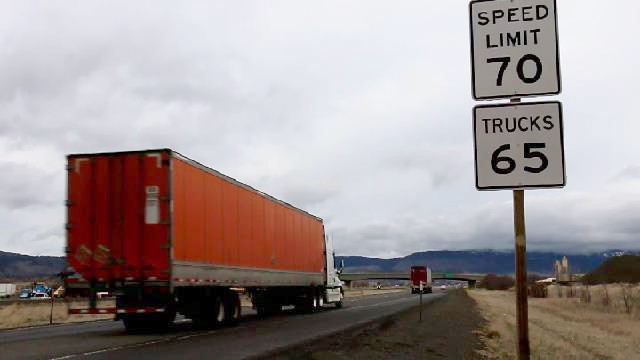Most long-haul semi-truck drivers in the U.S. are not paid a salary. They are not paid by the hour.
They are paid per mile.
A majority of trucking companies pay drivers between $0.28 and $0.40 cents per mile. Fewer pay experienced drivers up to $0.45 cents per mile.
Some jobs pay bonuses. But most of a trucker’s “On Duty, Not Driving” time—loading, unloading, refueling, break time— is unpaid.

Long haul commercial truckers stuck in traffic aren’t being paid for that time. That’s not fair—and not safe.
When truckers are waylaid by bad weather, stuck in traffic, or taking their mandatory breaks, they are basically unpaid.
Does pay-per-mile contribute to truck crashes?
Paying truckers per mile creates an incentive for unsafe driving.
If a driver paid per mile is put off-schedule by a sudden traffic jam, that driver may drive too long and skip breaks to make the miles.
A recent study from Australia, under review by the Federal Motor Carrier Safety Administration, supports this theory. Researchers found that truck drivers who are paid by distance (in Australia, kilometers), or paid per trip, take fewer breaks—and take more drugs.
A tired trucker, or trucker who has used drugs to stay awake, trying to make up miles, is a recipe for a serious truck crash.

Most drivers aren’t paid anything when they’re On Duty Not Driving time in their log book. Pay truckers by the hour, because they work by the hour.
The high rate of truck driver turnover
Experienced truckers are leaving the industry because they’re not making enough money for their time and effort.
This creates a safety issue: inexperienced drivers are more likely to be in crashes.
For long-haul carriers, it’s a revolving door: they had turnover rates of 99 percent in the first half of 2013.
Although it makes sense from a safety perspective, it’s unlikely that major trucking companies would be willing to consider the pay change.
Trucking carriers argue that customers are paying fleets by the mile. Therefore, fleet drivers should be paid by the mile, too.
“Disconnecting driver pay from how we get paid by our customers is a very frightening thought for this industry…”
The trucking industry would be committing “financial suicide,” with hourly pay, said Steve Gordon, COO of Gordon Trucking Inc.
Are changes coming to the pay per mile system?
Federal regulations require truckers to take one 30-minute break in their first eight hours of driving.
But some states have different laws.

California truck drivers—like all other employees in that state—must take a 30-minute meal break in their first five hours on shift, and another break within the next five hours. They also earn a paid 10-minute rest break for every four hours of working.
In 2016, Walmart Transportation was ordered by a federal jury to pay 850 of their current and former truckers a total of $55 million in back pay, in compliance with California minimum wage laws. Walmart had failed to pay truck drivers for required breaks.
Now, California state legislators are proposing to do away with the break rules for truckers employed by interstate trucking companies.
Those paid rest breaks are some of the very few exceptions to the pay-per-mile system that perpetuates safety issues like speeding and drowsy driving.
Pay truckers by the hour.
Rather than attempting to stop truckers from being paid for 10-minute breaks, legislators should look at the dangers and inequities of the piecework, per mile system of pay.
Instead, let’s look at what it would take to pay truckers by the hour. It could pay off for all of us.

Truck crashes are way up in Washington State this year … and it’s not clear why.
As of July 1, 2017, there has been 485 crashes involving semi-trucks. That’s 103 more than the same time last year.
*This post was published 12/19/14, updated on 4/14/17, and on 8/15/17.

[…] mile instead of hourly. According to the group Trucking Watchdog, a majority of trucking companies pay between 28 and 40 cents per […]